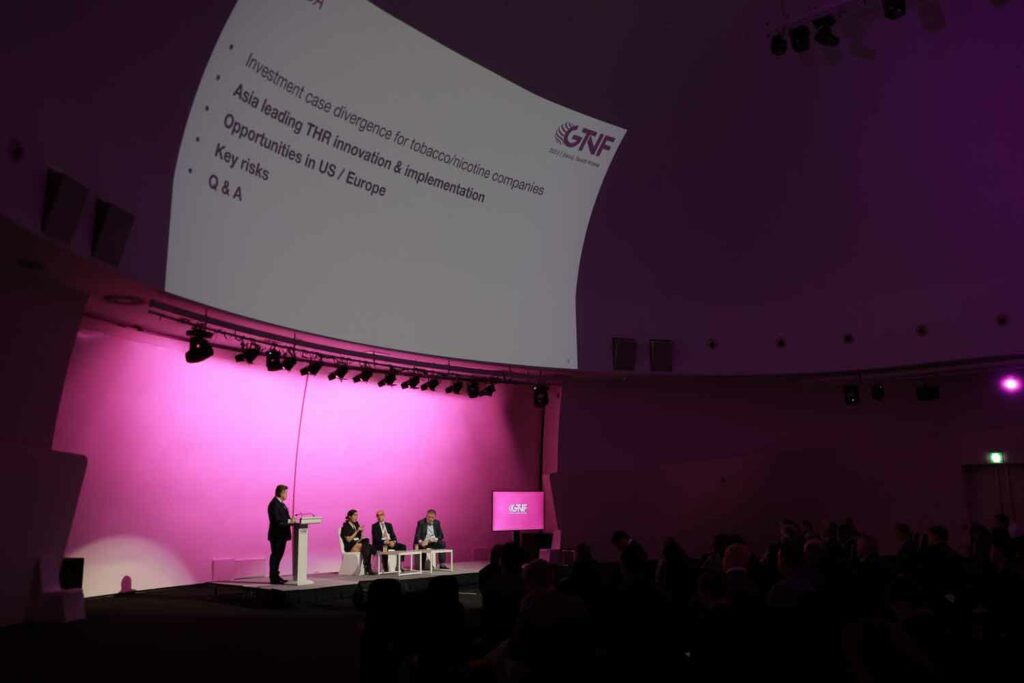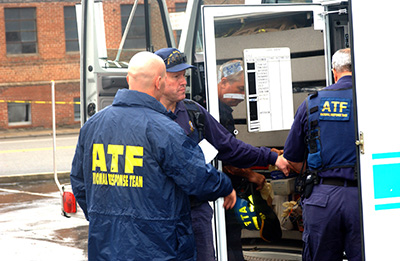
This year’s panel looked at how investors view the industry’s transformation and the challenges regulations hold for the further proliferation of reduced-risk products. Among the multinational players, Philip Morris International leads the pack regarding performance of smoke-free products. In the first half of 2023, 34.1 percent of its revenues were generated by such offerings. The acquisition of Swedish Match has catapulted PMI forward in the smokeless category. At BAT, the segment accounted for 16.6 percent of revenues. It was followed by Imperial Brands, with 3.7 percent, and Japan Tobacco, with 3.2 percent. With an operating margin of around 39 percent in 2022, PMI also achieves higher profitability from the category than BAT and JT, which plan to break even by 2024 and 2028, respectively.
With the introduction of its heated-tobacco product (HTP) brand IQOS in Japan in November 2014, PMI started a success story—reduced-risk products (RRPs) currently account for 37 percent of the country’s tobacco market. Using its first-mover advantage, PMI today holds around 72 percent of the HTP market followed by BAT with 18 percent. JT, which was relatively late to launch Ploom Tech in its domestic market, stands at 10 percent.
In South Korea, the world’s second-largest HTP market after Japan, PMI’s first-mover advantage was shorter lived as KT&G responded with the introduction of Lil only six months after IQOS had entered the market. The HTP category now represents 19.2 percent of South Korea’s tobacco market, with KT&G being the leading player with a share of 47 percent followed by PMI (41 percent) and BAT (12 percent).
In addition to Japan and South Korea, Sweden and the U.K. provide examples of how a tobacco harm reduction approach can lower smoking rates. Using these countries as models for others, however, is difficult as the conditions for the success of RRPs vary. In Japan, for instance, HTPs are under the authority of the ministry of finance and looked at from a taxation point of view. They are also boosted by the fact that nicotine vaping is prohibited. In the U.K., government and health bodies have been supportive of RRPs, which played a significant part in the success of the category. Furthermore, there’s a significant price gap between combustible cigarettes and RRPs in the U.K., which nudges consumers toward the latter. In Sweden, the transition to less hazardous products was driven by consumers without government support.
In general, publicly listed, multinational companies are pushing transformation harder than privately held, single-country companies as demonstrated by the Tobacco Transformation Index, which ranks the world’s 15 largest tobacco companies on their relative progress toward harm reduction. In many countries where the latter are operating, RRPs are banned and the cost of cigarettes is low, so there’s little incentive for these companies to change.
Companies with a strong exposure to the U.S. market, such as Altria, BAT and Imperial, continue to face regulatory uncertainty. Investors, however, want clarity. In August, the U.S. Food and Drug Administration missed another deadline to finalize its long-anticipated rule prohibiting the use of menthol in cigarettes. The recent Udall-Reagan report on FDA proceedings called for more clarity to ease the burden on the agency and increase efficiency, but panelists were pessimistic that the FDA will put recommendations into practice.
The upcoming tenth Conference of the Parties (COP10) to the World Health Organization’s Framework Convention on Tobacco Control is expected to bring new, illogical restrictions on RRPs, judging from proposals published in advance, such as a redefinition of aerosol as smoke. Panelists feared that with an “any risk is bad” approach, RRPs will increasingly be treated like combustible cigarettes.








